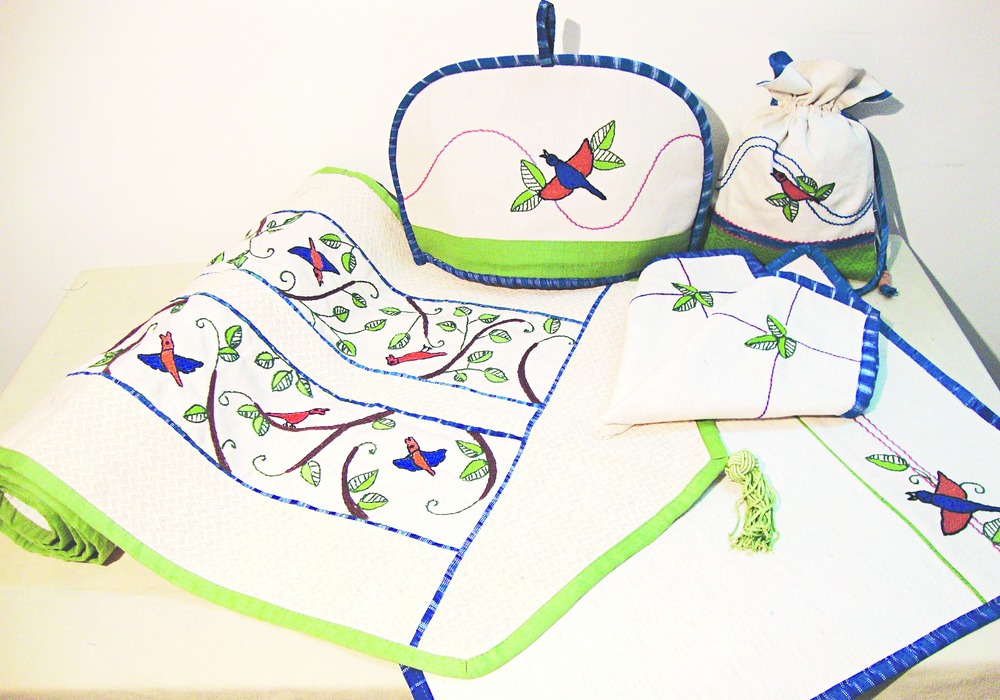
Ranchi, Oct. 30: As Jharkhand heads off to London tonight to take part in a global tourism fair and hard-sell the state's charms, stitching its package together will be an obscure but spectacular tribal embroidery technique named santha.
State tourism, art, culture, youth and sports affairs minister Amar Kumar Bauri, tourism secretary Avinash Kumar and director Suchitra Sinha, who will showcase Jharkhand at the four-day World Travel Mart (WTM) in London from November 2, have packed varieties of santha for display in line with the recent tourism policy that includes handloom and textiles as a priority.
Santha embroidery looks different from other mainstream styles such as Lucknow's chikankari, Bengal's kantha or Punjab's phulkari.
"It is mostly done by artisans of Santhal origin living in Hazaribagh, Seraikela-Kharsawan and parts of Jamshedpur in East Singhbhum, whom we inspired to translate age-old tribal wall paintings on cloth, substituting paints for threads," state tourism director Suchitra Sinha told The Telegraph.
Calling the name a derivation from Santhal and kantha, Sinha said they gave the stitch this name as it did not have one.
Displaying a host of santha designs on cushion covers, bed sheets, bags and other items, Sinha pointed out regional motifs, which seemed to have been derived from traditional art forms jadupatua, sohrai, kohvar and other wall paintings of Jharkhand.
Sinha said the tourism department had started working with rural artisans a decade back, trying to tie them up with design institutes to make their work look contemporary and sell in cities while conserving village art forms. But, things took off only around 2009-10 onwards, she admitted.
"I was the joint director in the state industries department then. During this time, we motivated many artisans working on different motifs in scroll and wall painting to stitch their designs on garments. Then, santha as a technique evolved, but even then it hardly received publicity," Sinha said.
In 2010-11, in one of the earliest endorsements of santha, National Institute of Fashion Technology (NIFT), New Delhi, under the ministry of textiles, praised and certified the technique, stating this style of embroidery wasn't done anywhere else in India.
In her letter, chairperson of NIFT Sudha Dhingra had noted: "Although not part of our mainstream and popular embroideries such as chikankari or kantha, it has an unusual aesthetic folk appeal. The embroidery sample that was showed to me had beautiful tribal and regional motifs. Something similar is done in Italy, which is known as Punto in Aria and means a stitch in the air. I have not seen this kind of work in any other part in India. But, if it is done by Santhals, maybe it remained only for their own expression. I was also informed that very few women are doing this embroidery as they have problems in selling this work."
Contacted, tourism minister Amar Kumar Bauri stressed the overall aim of their visit was to globally build Brand Jharkhand.
"Jharkhand has a rich and unique culture, including in art, handloom, music and dance, as well as stunning landscapes. Through PowerPoint Presentations, talks and one-on-one interactions with participants and visitors, we will establish Jharkhand's uniqueness before the world," he said.










